Hope Spot
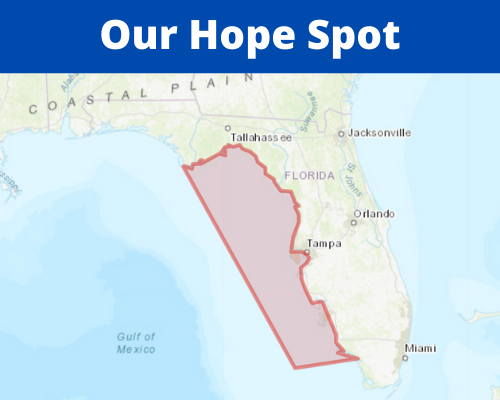
The Florida Gulf Coast Hope Spot is Official!
On August 23rd, 2019, our waters were officially recognized as a Hope Spot! Check out this write-up about the Newly Declared Florida Gulf Coast Hope Spot from Mission Blue, with words of encouragement from Dr. Sylvia Earle!
All communities and organizations from Apalachicola to Ten Thousand Islands can now use this as a unifying rallying point to gather support and initiate action to keep our Hope Spot healthy. Now is the time for action! This is your moment to call for sustainable and healthy practices on both land and water. For more information, visit

Hope Spots are special places that are critical to the health of the ocean — Earth’s blue heart. Dr. Sylvia Earle, who grew up on the Florida Gulf Coast in Dunedin, has initiated a global effort via Mission Blue, to shed light on these vital ecosystems and ignite support to safeguard them in ways their communities find valuable.
Learn more about Mission Blue.
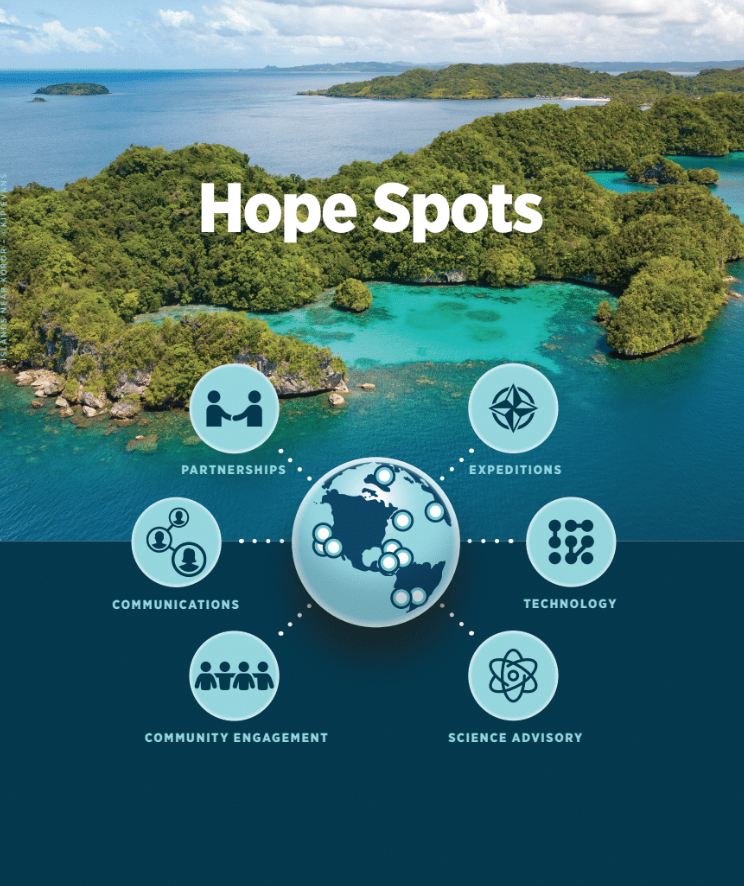
An area may receive the prestigious designation of a Hope Spot if it possesses the following characteristics:
- Unique ecological features
- A diversity of or rare/threatened species
- Spawning or nursery areas
- Historical, cultural or spiritual values
- Economic importance to the community
Receiving this designation opens up the global resources of the Mission Blue Foundation, enabling us to utilize the technology and science advisory committees to facilitate:
- Partnerships
- Expeditions
- Community Engagement
- Communications
Learn more about Hope Spots. And click on the pin that marks the location of the Florida Gulf Coast to learn more about our Florida Gulf Coast Hope Spot!
The Florida Gulf Coast Hope Spot...
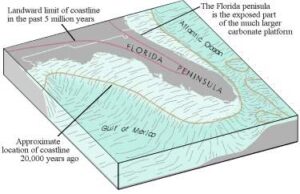
Credit: Wikipedia - Florida Platform
Hard Rocky Bottoms
To understand what makes the Florida Gulf Coast Hope Spot so special, one has to learn a little about the geology behind it. Florida was much larger during the last ice age when sea levels were lower. Its land mass was as much as three times its current size. Due to the history of higher and lower sea levels, shallower areas repeatedly flooded and then evaporated, leaving behind ever thickening deposits of evaporite minerals. As a result, Florida's base rock is comprised primarily of limestone deposited from skeletons of billions of marine animals. A submerged rock ridge defines the orientation of the barrier islands, which are covered with quartz-rich sand. The offshore submerged rocky hard bottoms support an extensive living benthic (bottom) community. This unique ecological feature provides Essential Fish Habitats (EFH) for corals and provide foundation for bottom dwelling sessile (stationary) organisms including the oysters that make Apalachicola the oyster capital of the world and the sponges that make Tarpon Springs the sponge capital of the world. The karst limestone bottoms also encourage the formation of the blue holes (see map below) that are currently being studied.
Learn more about the Florida Platform
Learn more about Benthic Ecology
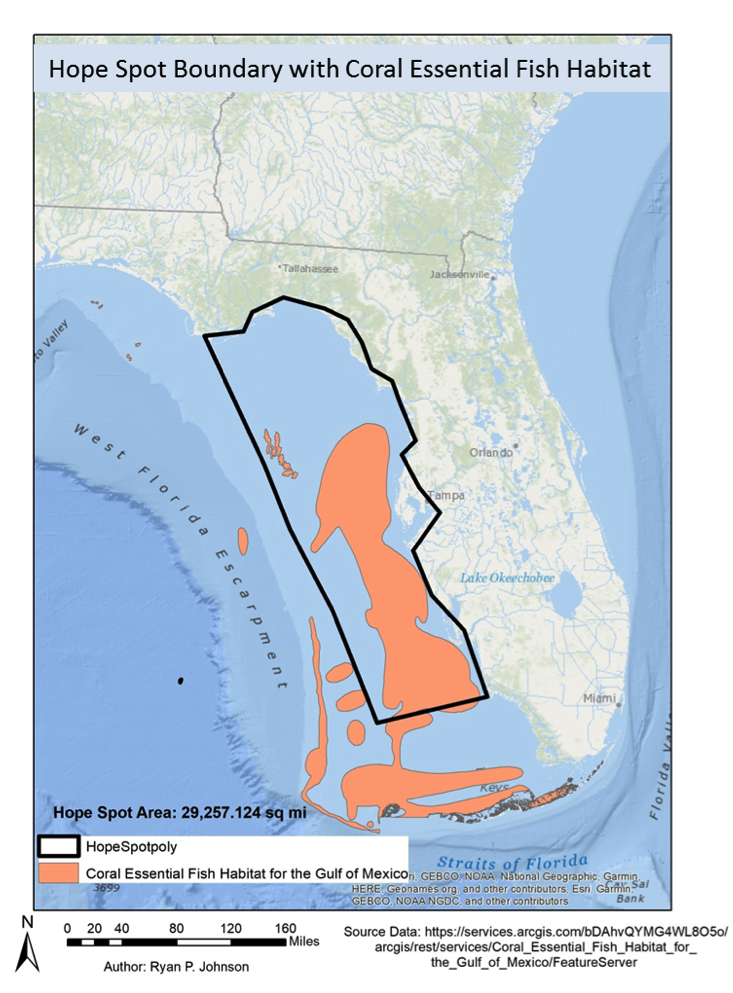
Boundaries
Our Florida Gulf Coast Hope spot has many geological features and habitats that make it unique including hard rocky bottoms, Coral EFT and seagrass beds. It also has great diversity of ecosystems and species as a result. The Hope Spot boundaries were selected to incorporate a significant portion of these.
The Western Boundary was selected to cover a large portion of the the Middle Grounds, Coral EFH, and many Blue Holes (see map below).
Learn more about Coral EFH
The Northern Boundary of the Hope Spot contains oyster habitats that are in critical need of protection. Oysters in Apalacicola account for 90% of the oysters in Florida and are of is of great economic importance.
Learn more about the Apalachicola Oyster Fisheries Closing
The Southern Boundary is the lower point of the large section of Coral Essential Fish Habitat (EFH) and unique Hardy Rocky Bottoms. It also includes an area that recently sustained a significant impact from red tide and contaminated water from Lake Okeechobee.
Learn more about Red Tide
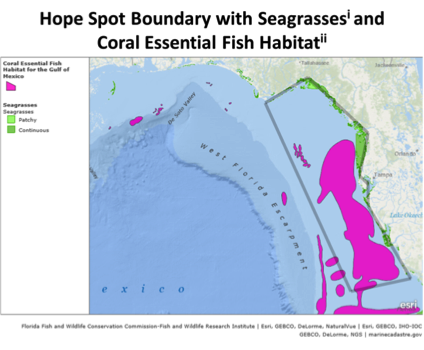
Seagrasses
Seagrass beds are prevalent throughout the coastal regions of the Florida Gulf Coast Hope Spot. They provide protection from storm surge and help to filter the water. They are also a vital ecosystem for everything from microbes to sharks. Many fish use the grass beds as spawning and nursery areas.
Learn more about Seagrasses
Learn about Tampa Bay Estuary Program's' Successes with Seagrass Restoration.
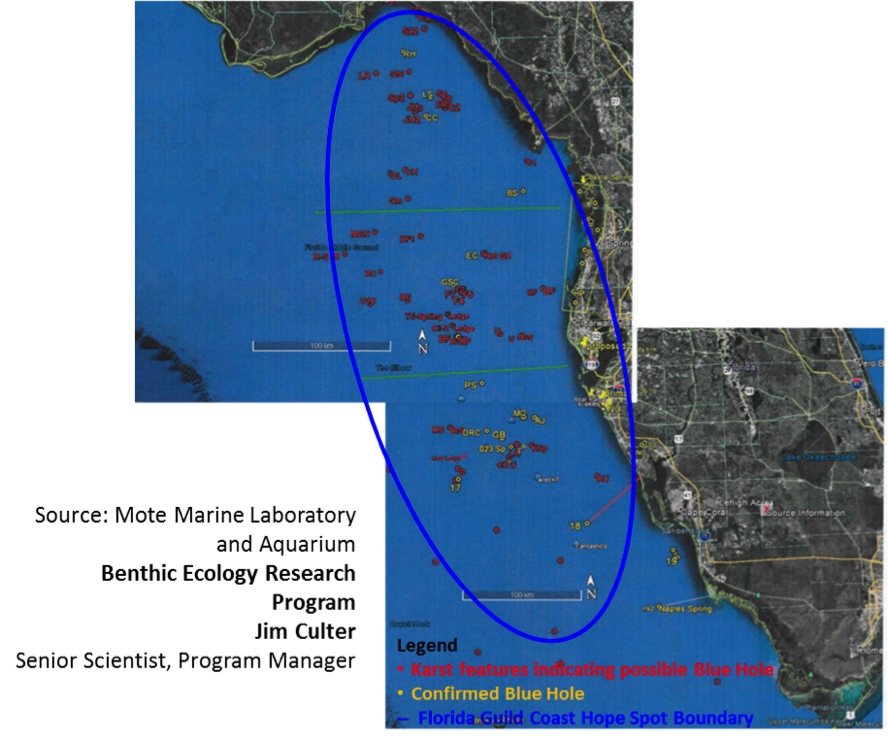
Blues Holes
Blue Holes support a diverse benthic community as well as various types of fish. They also interestingly may provide connectivity between the ocean and the groundwater that lies inward. In fact, some of them, including one right off Tampa Bay still have freshwater springs coming up through them. The connectivity with our ground water highlights the fact that what we do on land can affect the oceans, and vice versa.
“Blue Holes are ecological ‘hot-spots’, having elevated chlorophyll concentrations (from algae) and diverse biological communities that thrive locally above the holes, including commercially important fish species such as grouper, amberjack, and snapper”, Culter said. Hole openings can also host algae, sponges, corals, mollusks, crustaceans, echinoderms, sea turtles and sharks.” Credit: Rutger, Hayley, “A “hole” new look into Florida’s offshore frontiers”, MOTE Magazine, Winter 2018 Volume 79: Pages 15-18
See this spectacular Blue Holes Video right off our coast.
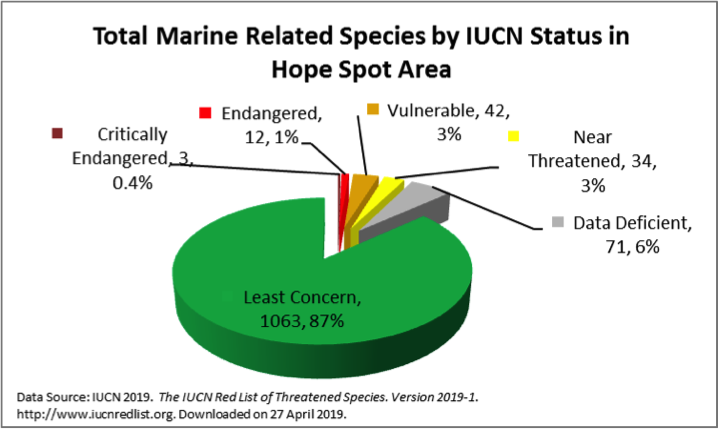
Threatened Species
The Florida Gulf Coast Hope Spot is also home to a number of endangered and threatened species according to the IUCN, the International Union for the Conservation of Nature. The IUCN is the group primarily responsible for determining what species are endangered. It contains 91 different species that range from critically endangered to near-threatened - that’s over 7% of all of the species in the area
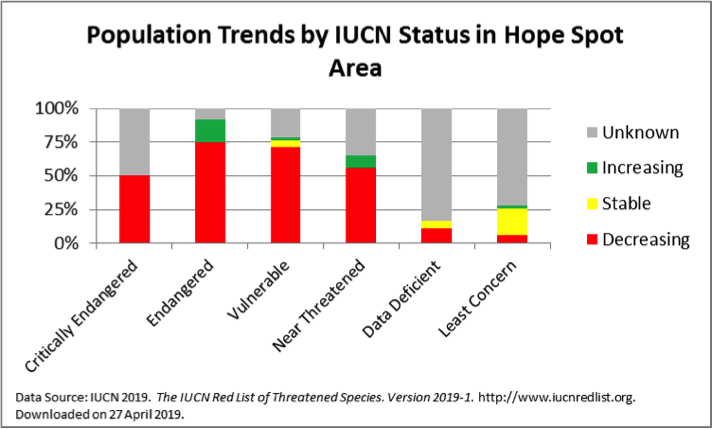
Population Trends
The population trends are not looking favorable, so we must do everything in our power to understand these delicate ecosystems and protect them from threats. Please join us in standing strong for our Florida Gulf Coast Hope Spot!
"I wish you would use all means at your disposal — films, the web, expeditions, new submarines, a campaign! — to ignite public support for a network of global marine protected areas, hope spots large enough to save and restore the ocean, the blue heart of the planet."
– Dr. Sylvia Earle’s 2009 TED Prize wish that launched Mission Blue
BLUE-GREEN CONNECTIONS, INC. IS A 501(C)(3) NOT-FOR-PROFIT ORGANIZATION WITH REGISTRATION NUMBER CH59415. ALL GIFTS MADE TO THIS ORGANIZATION ARE TAX-DEDUCTIBLE TO THE EXTENT PROVIDED BY LAW. A COPY OF THE OFFICIAL REGISTRATION AND FINANCIAL INFORMATION MAY BE OBTAINED FROM THE DIVISION OF CONSUMER SERVICES BY CALLING TOLL-FREE (800-435-7352) WITHIN THE STATE OR BY VISITING WWW.FRESHFROMFLORIDA.COM. REGISTRATION DOES NOT IMPLY ENDORSEMENT, APPROVAL, OR RECOMMENDATION BY THE STATE.
© Copyright 2019-2020